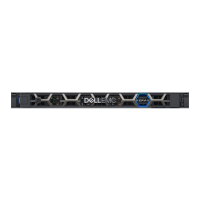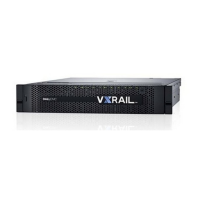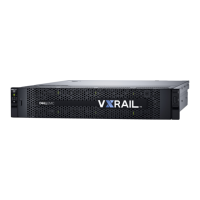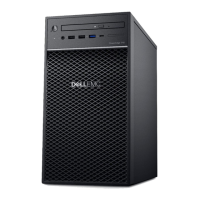9 | Network Planning Guide
© 2018 Dell Inc. or its subsidiaries
• VxRail nodes supporting 10GbE can be configured with either 2 ports supporting VxRail cluster network traffic, or all 4 ports
can be configured for the VxRail cluster network traffic.
• 4 ports are required for each VxRail node when utilizing 1GbE networking on the supported single processor models.
• All-flash VxRail models must use either 10GbE or 25GbE NICs. 1GbE is not supported for all-flash.
• The network hardware configuration in a VxRail appliance must have same NDC across all VxRail nodes.
o VxRail nodes with RJ45 ports and SFP+ ports cannot be mixed in the same VxRail appliance
o The port speed for each VxRail node (25GbE, 10GbE, 1GbE) must be the same in the VxRail appliance
o These restrictions are not applicable to optional connectivity ( PCI-e NICs)
• One (1) additional port on the switch or one logical path on the VxRail external management VLAN is required for a
workstation/laptop to access the VxRail user interface for the cluster.
Topology and Connections
Various network topologies for switch(es) and VLANs are possible with VxRail Appliances. Complex production environments will
have multiple core switches and VLANs. A site diagram showing the proposed network components and connectivity is highly
recommended before cabling and powering on VxRail Appliances.
Be sure to follow your switch vendor’s best practices for performance and availability. For example, packet buffer banks may
provide a way to optimize your network with your wiring layout.
Decide if you plan to use one or two switches for VxRail. One switch is acceptable and is often seen in test/development. To support
high availability and failover in production environments, two or more switches are required. The VxRail appliance is an entire
software-defined data center dependent on the physical top-of-rack switch for network communications. A lack of network
redundancy places you at risk of losing availability to all of the virtual machines operating on the appliance.
The figure shows the recommended physical network setup using a management switch (for iDRAC) and two ToR switches. Other
network setups can be found in Appendix C

